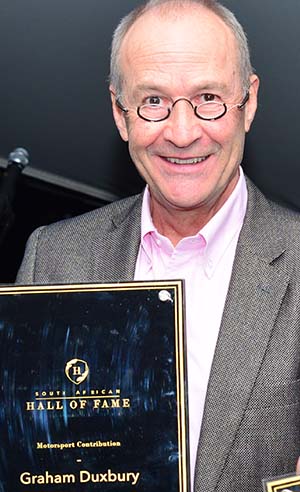It was in late 1961 when Sir Alfred Owen, chairman of Rubery Owen Holdings, experienced an epiphany.
 By Graham Duxbury
By Graham Duxbury
He had spent millions on motor racing over the years – notably on the BRM (British Racing Motors) Formula One team which he purchased in 1952 – and had little to show for it. Changes had to be made.
BRM’s old-guard, co-founders Peter Berthon and Raymond Mays, had to go. They were “kicked upstairs” in a boardroom shuffle, Berthon becoming chief consultant with Mays as director of racing.
Their replacement was Tony Rudd, a promising engineer who had completed his apprenticeship at Rolls Royce. As fate would have it, BRM’s post-war V16 supercharged Grand Prix engines relied on Rolls-Royce superchargers and he was seconded to BRM in 1951 to assist with their development.
He never returned to Rolls-Royce.
Now, with a decade of experience at BRM, he grabbed the opportunity given him by Sir Alfred and, as chief engineer, established a slew of new engineering procedures and protocols within the team.
With just one F1 World Championship win to BRM’s credit – Jo Bonnier had won the Dutch GP in 1959 – Sir Alfred demanded at least two GP wins in ‘62 or he would “pull the plug”.
With his goal defined, Rudd set out to build a successful team, relying on a brand new V8 engine to power a new monocoque chassis.
Drivers Graham Hill and Richie Ginther were tasked with beating a formidable array of competitors, including teams from Lotus, Cooper, Porsche, Lola, Brabham and Ferrari.
The 1962 F1 season was prefaced by a few non-championship races in Britain. The first, at Snetterton, was won by Jim Clark’s Lotus. However, Hill was an encouraging second.
Then, on a sad day at Goodwood, Hill’s great drive and well-deserved triumph for BRM was overshadowed by Stirling Moss’ severe, career-ending crash.
At Aintree, both BRMs retired, but the team was re-energised after the International Trophy race at Silverstone when, in a last corner lunge, Hill overtook Clark to win a thrilling race.
With the preliminary races over, it was time for the first World Championship event – the Dutch GP. Former ‘bike racer John Surtees claimed pole position for Lola, with Hill and Clark next.
In the race, Clark grabbed an early lead. However, reliability – a perennial Lotus Achilles heel – soon sidelined him, leaving the way clear for Hill to famously post his first GP victory.
By contrast, the Monaco GP represented a double disappointment for BRM as both Hill and Ginther retired. The 100-lap race, nearly three-hours in duration, was won by Bruce McLaren in a Cooper.
A delighted Clark won the Belgian GP, his first World Championship GP race success, finishing ahead of Hill. Soon after, an equally jubilant Dan Gurney (Porsche) posted his first GP win, beating the Cooper of South Africa’s Tony Maggs at the French GP. Here, Hill finished well down the field, plagued by fuel injection issues.
After winning the British GP, Clark trailed Hill in the 1962 World Drivers’ Championship chase by a single point, while Lotus was ahead of BRM in the World Constructors’ Championship by a similar, slim margin.
Would BRM win another race and so redeem itself in Sir Alfred’s eyes? Joy and relief must have been evident in equal measure after the German and Italian Grands Prix, both won by Hill. Clark (with a fourth and a retirement) slipped behind in the reckoning.
Nothing daunted, Clark won the United States GP ahead of Hill to set up a much-anticipated championship finale in South Africa at East London’s Prince George circuit. With the race scheduled for 29 December, there was an agonising two-and-a-half-month wait for battle to recommence.
According to the rules at that time, only a driver’s best five results could count towards his championship tally. This meant that Clark had to win to secure the title. If he did not, then Hill would be champion.
Clark did his best, taking pole position and then leading the race comfortably. But an engine oil leak forced him to retire, handing the race and the championship to Hill. The win also gave BRM its first and only constructors’ title.
Sir Alfred continued his support for BRM until 1970 when the team was taken over by Louis Stanley, the husband of Sir Alfred’s sister, Jean Owen. BRM would soldier on until 1977. The last notable performance was Jean Pierre Beltoise’s second-place finish in the 1974 SA GP at Kyalami.
Hill would go on to win a second title in 1968, this time with Lotus. Rudd also departed BRM for Lotus, becoming an engineering director in its road-car division.
